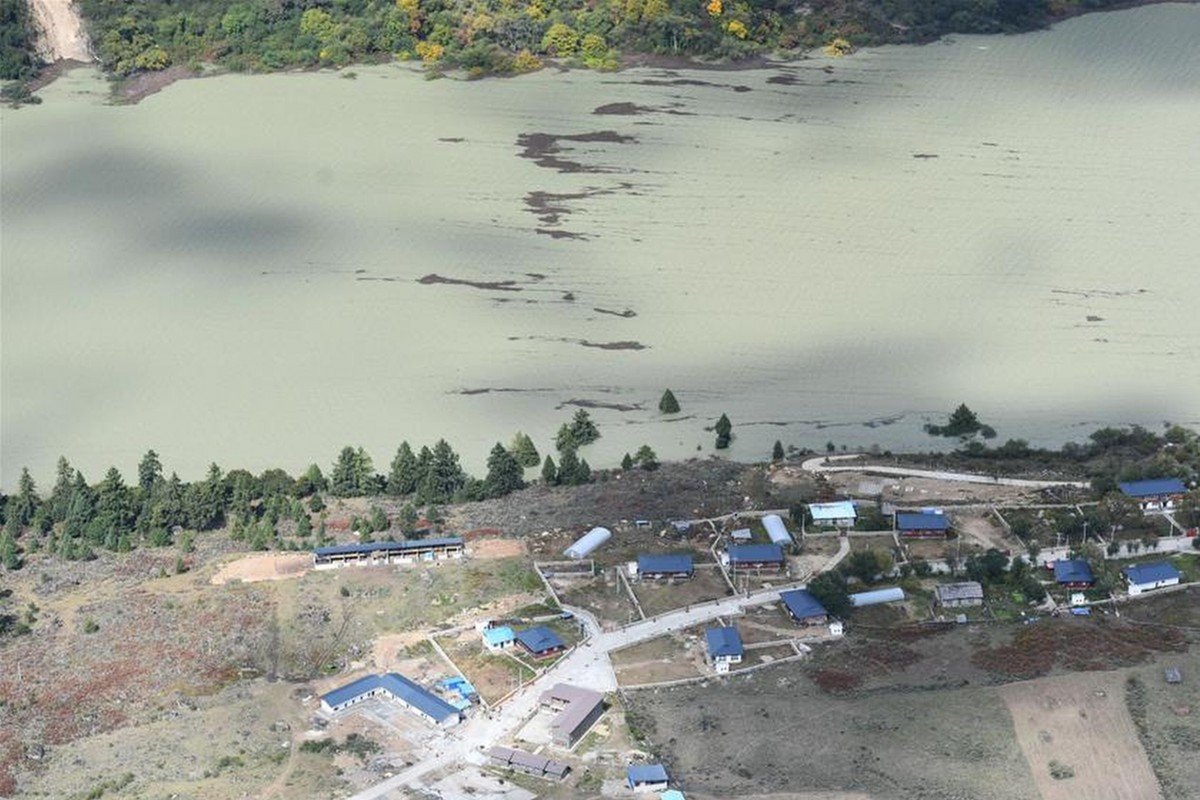
SOURCE: SCMP
For much of this year, tensions between China and India have centred on a disputed section of their Himalayan border known as Ladakh. In June, those tensions erupted into bloody conflict, which left at least 20 Indian soldiers dead, with an undisclosed number of Chinese casualties.
But another potential area of border conflict is brewing further east where Tibet in China meets Arunachal Pradesh in India. The area is traversed by the 2,900km-long (1,800-mile) Yarlung Tsangpo river, known in India as the Brahmaputra, and since 2010, China has planned hydropower projects to harness energy in the middle reaches of the river.
Now Beijing has signalled that it is shifting its attention to the lower reaches of the waterway, moving closer to India.
Before it flows into Arunachal Pradesh and enters Bangladesh, the Yarlung runs for about 1,625km through southeast Tibet.
Tibet is a key area for power generation in China, with its rivers estimated to have about a quarter of the national total potential capacity, according to Chinese government estimates.
Beijing’s hydropower plans for the Yarlung go back at least a decade. In the previous two five-year plans China set targets for “hydroelectric facilities at the middle basin”.
The middle basin is closer to the Line of Actual Control (LAC) – a 3,488km unmarked de facto boundary between China and India that has seen decades of claims and counterclaims.
At least 11 hydroelectric projects along the river have been operating or being planned by China over the past decade. The largest among the three known to be in operation is Zangmu, which started to fully operate since 2015. Hydropower stations in Bayu, Jiexi, Langta, Dakpa, Nang, Demo, Namcha and Metok towns in Tibet are either on the drawing board or under construction.
The Chinese government has also planned a dam on the lower reaches that would be at least double the size of Three Gorges Dam. However, feasibility of the project is still being examined.
Jagannath Panda, a research fellow at New Delhi’s Manohar Parrikar Institute for Defence Studies and Analyses, said the prospect of more dams close to India raised concerns in New Delhi.
“
These [dam projects] have instigated worries in India as Chinese construction of dams close to the LAC, mixed with the India-China boundary disputes, assumes to be carrying strategic intents while creating strategic divide between India and its Himalayan rivers,” Panda said.
He also noted the Chinese foreign ministry’s recent claim that Beijing had never recognised Arunachal Pradesh as an alarming sign that China might use the dams and other water infrastructure as “a strategic tool to expand its control over the region”.
On top of the sensitive geographical location of the river, there are worries in India about the environmental impact of more dams and river diversions.
As the upstream of the river is on China-controlled territory, India and Bangladesh have been worried that China’s major interventions over the waterway will affect the ecosystem as well as the river flow downstreams.
The only official cooperation between China and India over the river is a memorandum of understanding to share hydrological data on the waterway during the monsoon season to prevent flooding in the lower basin.
Gautam Bambawale, a former Indian ambassador to China, said the existing cooperation on the river data was not enough to calm India’s nerves. “[T]here is no exchange of information on China’s dam building activity in the middle reaches of the Yarlung … The government of India has on several occasions expressed its concern over such construction activity particularly as China is constructing a series of cascading dams there,” Bambawale said.
“This subject is already a matter of concern for India which has urged China to enhance cooperation as well as information sharing about the river … We would like greater transparency on this subject between the two countries.
Data sharing between China and India has occurred for over a decade, but in 2017, amid a 73-day stand-off in yet another border area known as Doklam, India accused China of having stopped sharing the data citing that the hydrological data gathering sites were washed away due to floods.
Anamika Barua, a professor specialising in the environment and economics at the Indian Institute of Technology Guwahati, said she was worried that cooperation and communication about the river could become overly politicised.
“Although there are ups and downs, but in general, the sharing of data is happening and I do not really see that to be a big concern. But speculation, mistrust and poor communication is a bigger problem and can affect the diplomatic relationship between the countries too,” she said.
The Indian government, meanwhile, has its own hydropower plans in the river for years but has made little headway.
Srikanth Kondapalli, professor of Chinese studies at Jawaharlal Nehru University in New Delhi, said he expected India to struggle to develop its hydroelectric projects in the river.
“India cannot match China’s massive infrastructure projects, like hydroelectric dams, in part because India is a democracy, unlike China,” he said.
“Road building projects in India have at times led to protests by locals, which requires the government to negotiate with citizens, and prevents them from building mega-scale projects that could be damaging to the local environment.
“China does not have to worry about this sort of negotiation in the same way India does, which is part of the reason it is able to build these megaprojects in the first place.”






